Abstract
Fluorescent antibody (FA) was prepared for a methanogenic bacterium isolated from Wintergreen Lake pelagic sediment. The isolate resembles Methanobacterium formicicum. The FA did not cross-react with 9 other methanogens, including M. formicicum strains, or 24 heterotrophs, 18 of which had been isolated from Wintergreen Lake sediment. FA-reacting methanogens were detected in heat-fixed smears of several different lake sediments and anaerobic sewage sludge. Pretreatment of all samples with either rhodamine-conjugated geletin or bovine serum albumin adequately controlled nonspecific absorption of the FA. Autofluorescent particles were observed in the sediment samples but, with experience, they could easily be distinguished from FA-reacting bacteria. FA direct counts of the specific methanogen in Wintergreen Lake sediments were made on four different sampling dates and compared with five-tube most-probable-number estimates of the total methanogenic population that was present in the same samples. The FA counts ranged from 3.1 X 10(6) to 1.4 X 10(7)/g of dry sediment. The highest most-probable-number estimates were at least an order ofmagnitude lower.
Full text
PDF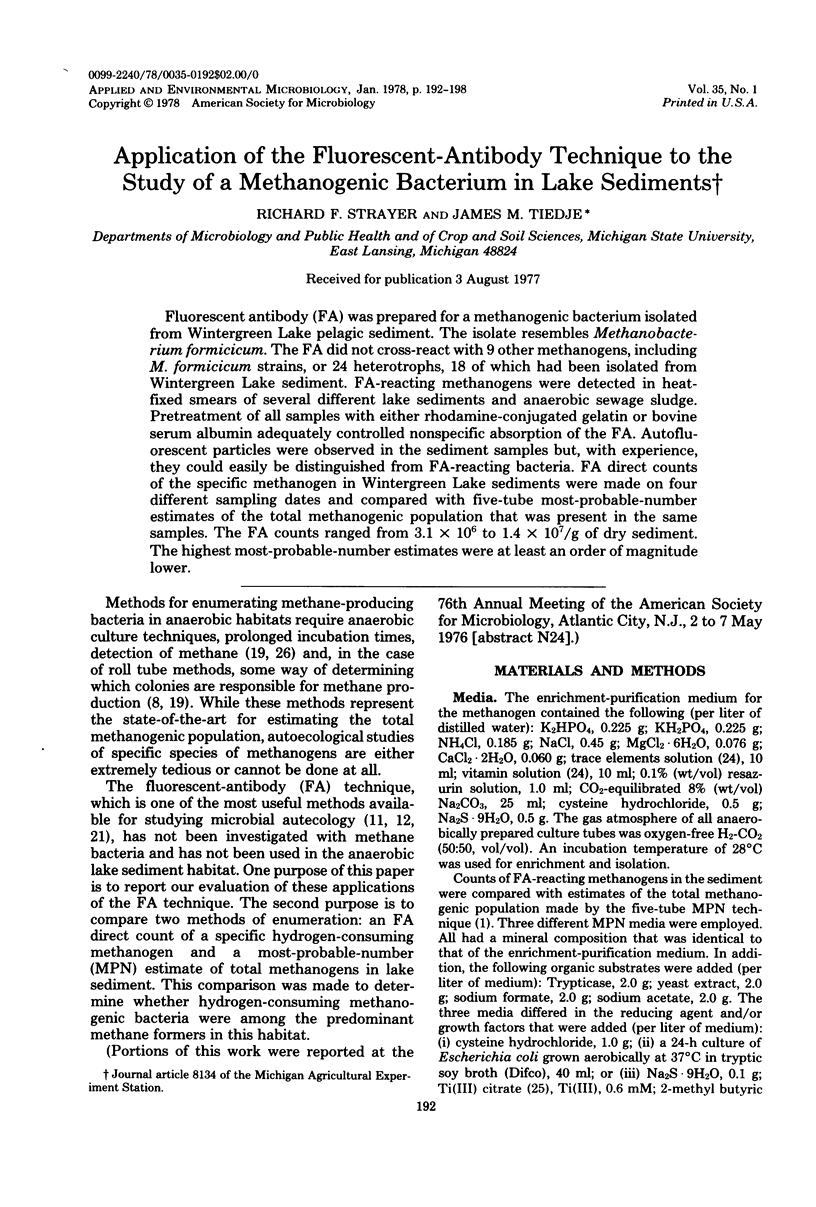
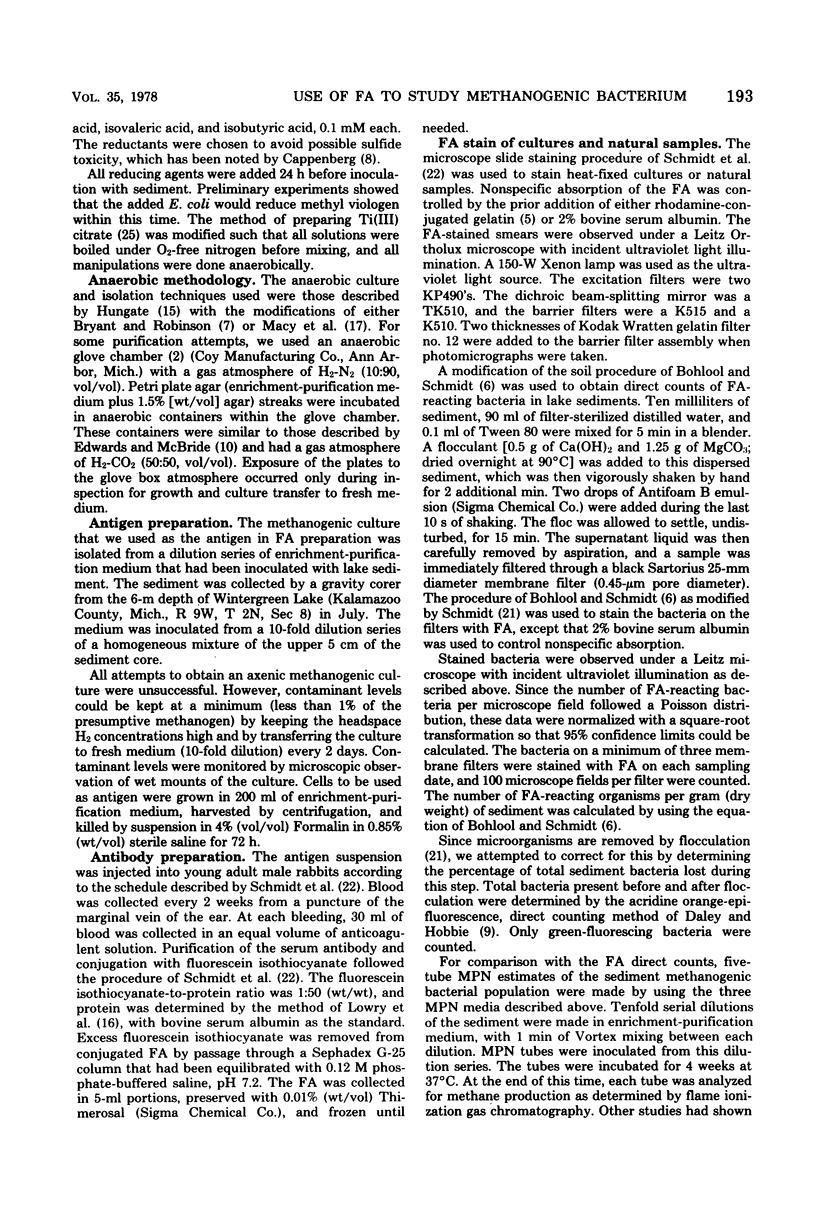
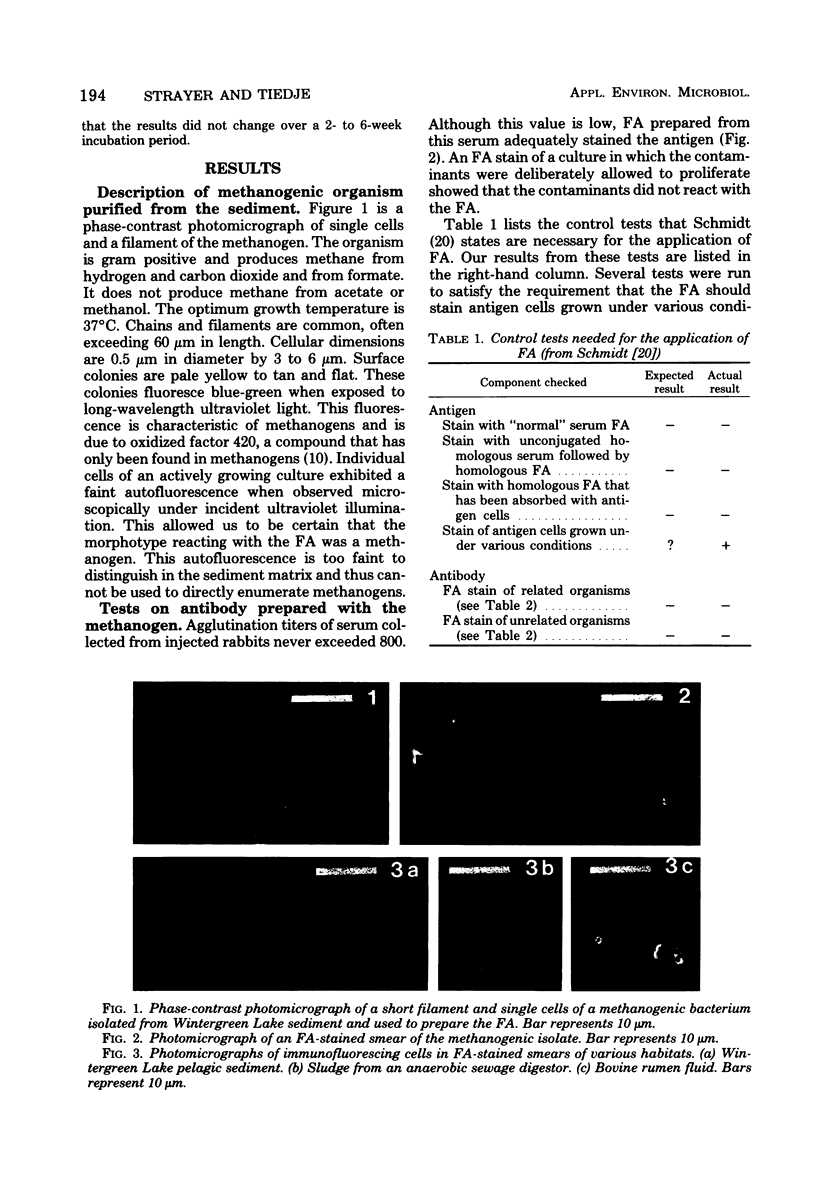

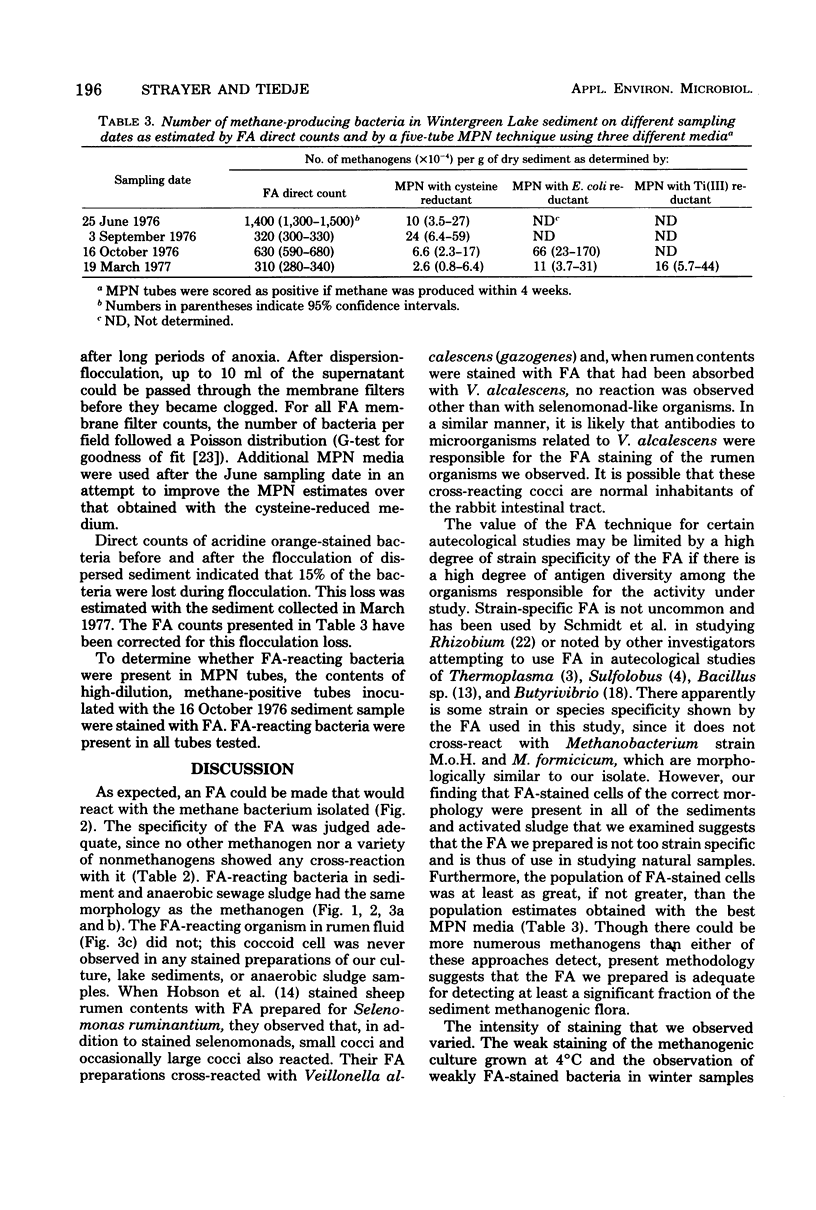
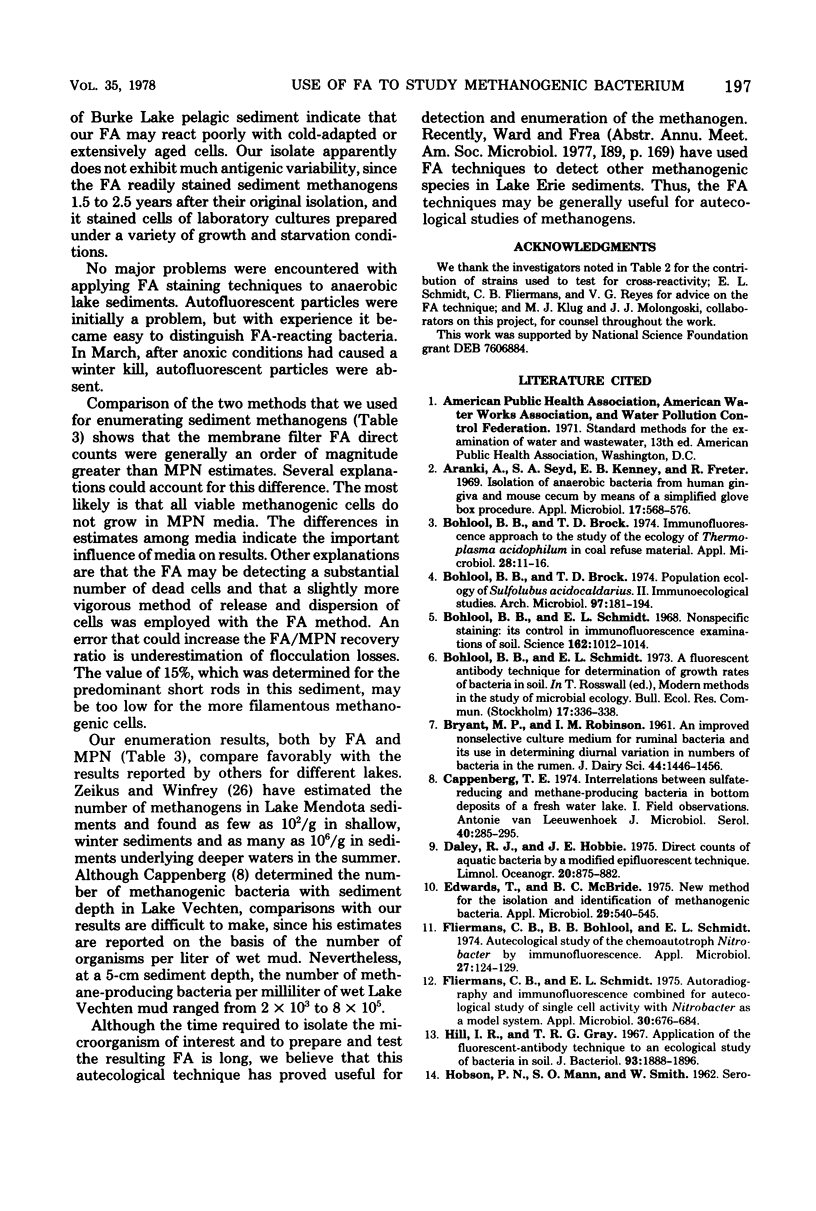
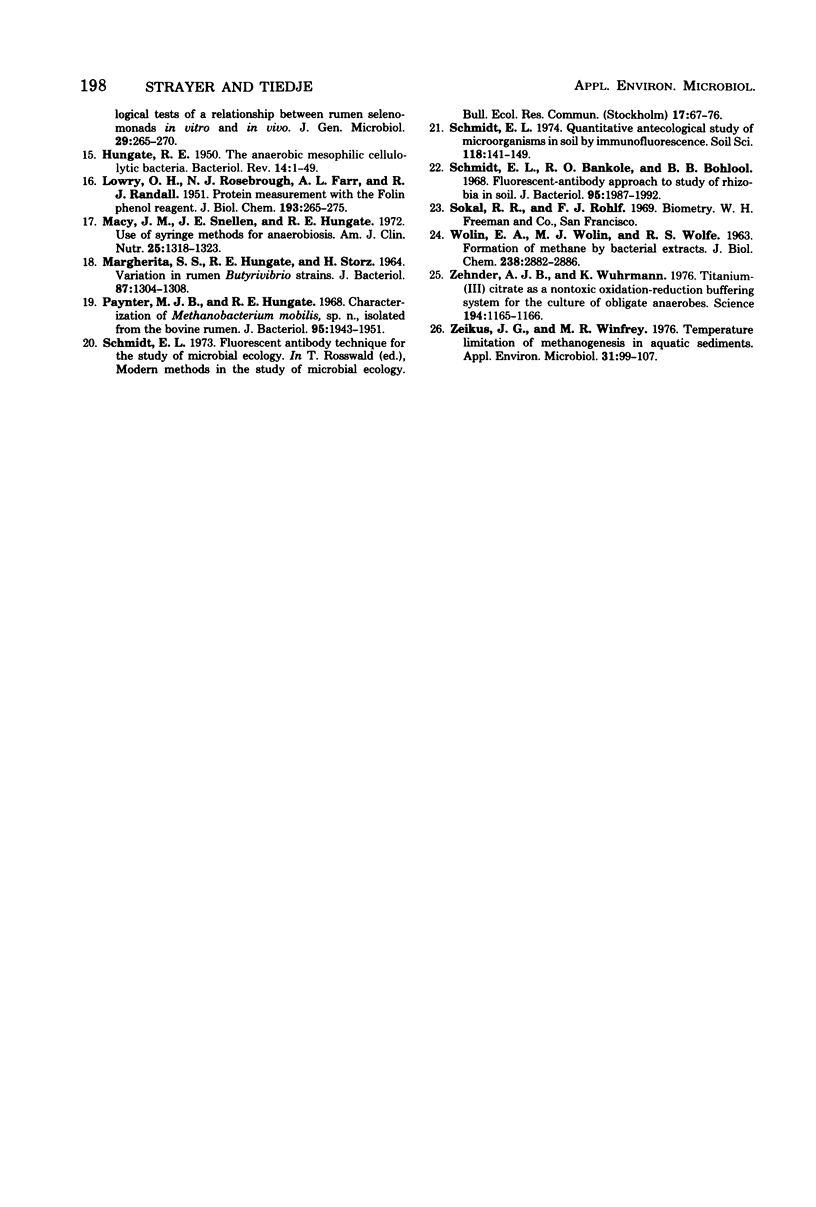
Images in this article
Selected References
These references are in PubMed. This may not be the complete list of references from this article.
- Arank A., Syed S. A., Kenney E. B., Freter R. Isolation of anaerobic bacteria from human gingiva and mouse cecum by means of a simplified glove box procedure. Appl Microbiol. 1969 Apr;17(4):568–576. doi: 10.1128/am.17.4.568-576.1969. [DOI] [PMC free article] [PubMed] [Google Scholar]
- Bohlool B. B., Brock T. D. Immunofluorescence approach to the study of the ecology of Thermoplasma acidophilum in coal refuse material. Appl Microbiol. 1974 Jul;28(1):11–16. doi: 10.1128/am.28.1.11-16.1974. [DOI] [PMC free article] [PubMed] [Google Scholar]
- Bohlool B. B., Brock T. D. Population ecology of Sulfolobus acidocaldarius. II. Immunoecolgical studies. Arch Microbiol. 1974 May 16;97(3):181–194. doi: 10.1007/BF00403057. [DOI] [PubMed] [Google Scholar]
- Bohlool B. B., Schmidt E. L. Nonspecific staining: its control in immunofluorescence examination of soil. Science. 1968 Nov 29;162(3857):1012–1014. doi: 10.1126/science.162.3857.1012. [DOI] [PubMed] [Google Scholar]
- Cappenberg T. E. Interrelations between sulfate-reducing and methane-producing bacteria in bottom deposits of a fresh-water lake. I. Field observations. Antonie Van Leeuwenhoek. 1974;40(2):285–295. doi: 10.1007/BF00394387. [DOI] [PubMed] [Google Scholar]
- Edwards T., McBride B. C. New method for the isolation and identification of methanogenic bacteria. Appl Microbiol. 1975 Apr;29(4):540–545. doi: 10.1128/am.29.4.540-545.1975. [DOI] [PMC free article] [PubMed] [Google Scholar]
- Fliermans C. B., Bohlool B. B., Schmidt E. L. Autecological study of the chemoautotroph Nitrobacter by immunofluorescence. Appl Microbiol. 1974 Jan;27(1):124–129. doi: 10.1128/am.27.1.124-129.1974. [DOI] [PMC free article] [PubMed] [Google Scholar]
- Fliermans C. B., Schmidt E. L. Autoradiography and immunofluorescence combined for autecological study of single cell activity with Nitrobacter as a model system. Appl Microbiol. 1975 Oct;30(4):676–684. doi: 10.1128/am.30.4.676-684.1975. [DOI] [PMC free article] [PubMed] [Google Scholar]
- HOBSON P. N., MANN S. O., SMITH W. Serological tests of a relationship between rumen selenomonads in vitro and in vivo. J Gen Microbiol. 1962 Oct;29:265–270. doi: 10.1099/00221287-29-2-265. [DOI] [PubMed] [Google Scholar]
- HUNGATE R. E. The anaerobic mesophilic cellulolytic bacteria. Bacteriol Rev. 1950 Mar;14(1):1–49. doi: 10.1128/br.14.1.1-49.1950. [DOI] [PMC free article] [PubMed] [Google Scholar]
- Hill I. R., Gray T. R. Application of the fluorescent-antibody technique to an ecological study of bacteria in soil. J Bacteriol. 1967 Jun;93(6):1888–1896. doi: 10.1128/jb.93.6.1888-1896.1967. [DOI] [PMC free article] [PubMed] [Google Scholar]
- LOWRY O. H., ROSEBROUGH N. J., FARR A. L., RANDALL R. J. Protein measurement with the Folin phenol reagent. J Biol Chem. 1951 Nov;193(1):265–275. [PubMed] [Google Scholar]
- MARGHERITA S. S., HUNGATE R. E., STORZ H. VARIATION IN RUMEN BUTYRIVIBRIO STRAINS. J Bacteriol. 1964 Jun;87:1304–1308. doi: 10.1128/jb.87.6.1304-1308.1964. [DOI] [PMC free article] [PubMed] [Google Scholar]
- Macy J. M., Snellen J. E., Hungate R. E. Use of syringe methods for anaerobiosis. Am J Clin Nutr. 1972 Dec;25(12):1318–1323. doi: 10.1093/ajcn/25.12.1318. [DOI] [PubMed] [Google Scholar]
- Paynter M. J., Hungate R. E. Characterization of Methanobacterium mobilis, sp. n., isolated from the bovine rumen. J Bacteriol. 1968 May;95(5):1943–1951. doi: 10.1128/jb.95.5.1943-1951.1968. [DOI] [PMC free article] [PubMed] [Google Scholar]
- Schmidt E. L., Bakole R. O., Bohlool B. B. Fluorescent-antibody approach to study of rhizobia in soil. J Bacteriol. 1968 Jun;95(6):1987–1992. doi: 10.1128/jb.95.6.1987-1992.1968. [DOI] [PMC free article] [PubMed] [Google Scholar]
- WOLIN E. A., WOLIN M. J., WOLFE R. S. FORMATION OF METHANE BY BACTERIAL EXTRACTS. J Biol Chem. 1963 Aug;238:2882–2886. [PubMed] [Google Scholar]
- Zehnder A. J., Wuhrmann K. Titanium (III) citrate as a nontoxic oxidation-reduction buffering system for the culture of obligate anaerobes. Science. 1976 Dec 10;194(4270):1165–1166. doi: 10.1126/science.793008. [DOI] [PubMed] [Google Scholar]
- Zeikus J. G., Winfrey M. R. Temperature limitation of methanogenesis in aquatic sediments. Appl Environ Microbiol. 1976 Jan;31(1):99–107. doi: 10.1128/aem.31.1.99-107.1976. [DOI] [PMC free article] [PubMed] [Google Scholar]





